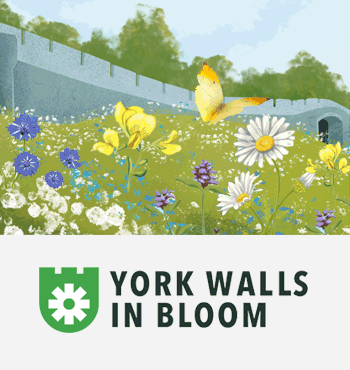Conservation works and partial closure of the City Walls
Find out more about our in-house Stonemason Team carrying out conservation works at Bootham Bar from Monday 16 June, for up to 6 months.
We're responsible for caring for, and making accessible, York's City Walls which are a major feature of our historic environment and civic identity. The walls include significant remains of all principal periods of their development and make visible over 2,000 years of urban change.
To ensure the City Walls remain in good condition now and in the future, we carry out a programme of preventative and reactive repairs, including:
- repointing
- repainting of metalwork
- removal of self-seeded saplings
- replacement of worn flags and coping stones.
We also monitor and inspect the City Walls for changes and defects, undertaking more detailed investigations and large scale structural interventions where necessary.
Our work is guided by:
- a Conservation Management Plan
- our summary document: York City Walls - A summary of their conservation, July 2021.
Email bar.walls@york.gov.uk to request a printed copy of the full plan.
York’s City Walls are the most complete and finest in England, making them one of our most treasured historical assets. It's incredibly important to maintain and repair the walls, so residents and visitors can enjoy them for many years to come.
Also see
- Visit the City Walls walkway
- York Walls donations
- City Walls opening and closing times
- Lighting the City Walls




